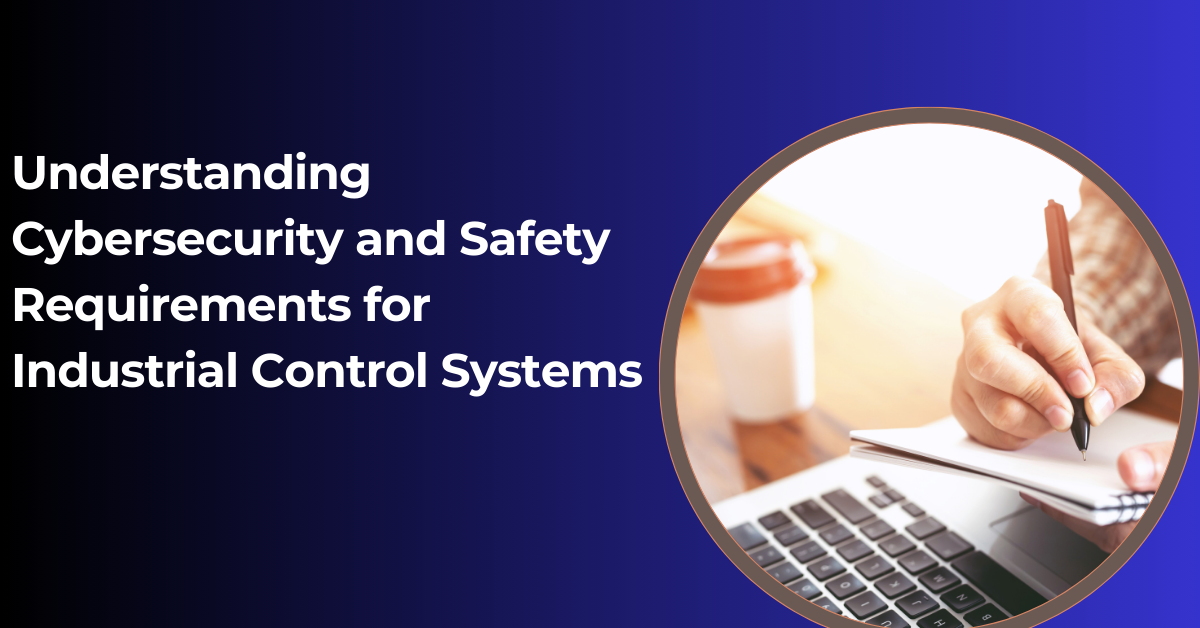When a potential breach of an industrial control system (ICS) could affect information, systems, and physical safety, a comprehensive defense strategy combining cybersecurity and functional safety is essential.
The fourth industrial revolution, also known as Industry 4.0, has introduced "smart" production models that enhance efficiencies and performance. However, connecting assets through networks also introduces significant risks. In recent years, many ICS cyber-attacks have aimed to disrupt the availability of these systems, interfering with normal industrial functions and operations, often causing substantial damage. Understanding and implementing best practices in ICS security can help mitigate these risks while enjoying the benefits of connected technologies.

Join CSA Group’s Matt Jakuc, Manager of Cybersecurity, and Peter Brown, Technical Advisor of Functional Safety, as they provide an overview of:
- Key concepts and standards in cybersecurity and functional safety
- Considerations for both IT and OT systems
- Common cyber threats to ICS and safety-related systems
- Best practices in ICS security
- Testing procedures at independent laboratories
The fourth industrial revolution, also known as Industry 4.0, has introduced "smart" production models that enhance efficiencies and performance. However, connecting assets through networks also introduces significant risks. In recent years, many ICS cyber-attacks have aimed to disrupt the availability of these systems, interfering with normal industrial functions and operations, often causing substantial damage. Understanding and implementing best practices in ICS security can help mitigate these risks while enjoying the benefits of connected technologies.
Industry 4.0 relies heavily on the integration of cyber-physical systems, the Internet of Things (IoT), and cloud computing. These advancements allow for real-time data exchange and automation, which can significantly improve productivity and reduce operational costs. However, this increased connectivity also expands the attack surface, making ICS more vulnerable to cyber threats. It is crucial for organizations to adopt a proactive approach to cybersecurity, incorporating robust defense mechanisms and continuously monitoring for potential threats.Functional safety, on the other hand, focuses on ensuring that ICS operate correctly even when they fail. .
It involves the implementation of safety-related systems designed to prevent hazardous events and mitigate risks to human life and the environment. Integrating functional safety with cybersecurity ensures that both accidental failures and malicious attacks are addressed, creating a more resilient industrial environment.One of the key strategies in enhancing ICS security is understanding the specific threats and vulnerabilities associated with these systems.
Common threats include malware, ransomware, phishing attacks, and insider threats. Each of these can lead to significant disruptions, financial losses, and in severe cases, physical harm. Organizations must conduct thorough risk assessments to identify potential vulnerabilities and implement appropriate security measures to protect their assets.Best practices in ICS security include network segmentation, regular software updates, and employee training.
Network segmentation involves dividing the network into smaller, isolated segments to limit the spread of an attack. Regular software updates and patches help address known vulnerabilities and prevent exploitation by attackers. Employee training is essential, as human error is often a significant factor in security breaches.
Educating employees about cybersecurity threats and safe practices can greatly reduce the risk of a successful attack.Testing procedures at independent laboratories play a crucial role in validating the security and safety of ICS. These tests evaluate the systems' resilience to various attack scenarios and ensure compliance with industry standards. By undergoing rigorous testing, organizations can identify weaknesses and take corrective actions to strengthen their defenses.
Conclusion
In conclusion, the intersection of cybersecurity and functional safety is vital in safeguarding industrial control systems (ICS) in the era of Industry 4.0. As smart production models continue to evolve, the risks associated with increased connectivity must be addressed through a robust and comprehensive defense strategy.
By understanding the unique threats to ICS, implementing best practices in security, and integrating functional safety measures, organizations can mitigate potential breaches and ensure the safe, efficient operation of their systems. Engaging with experts and adhering to industry standards further fortifies these efforts, creating a resilient industrial environment capable of withstanding both accidental failures and malicious attacks.
Comments (0)